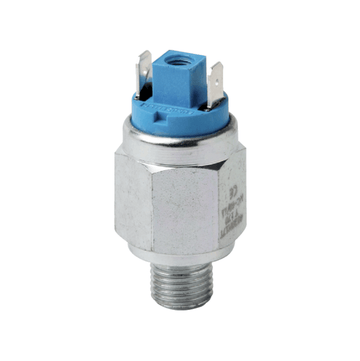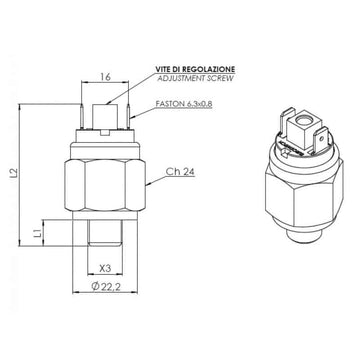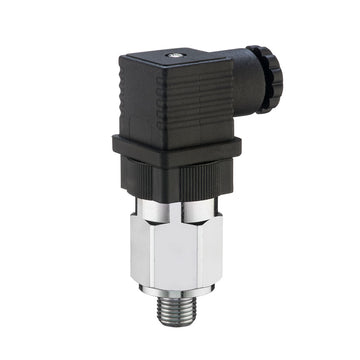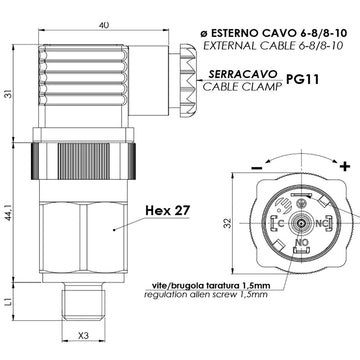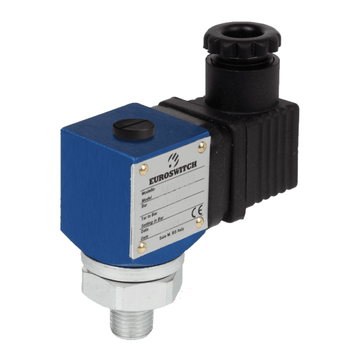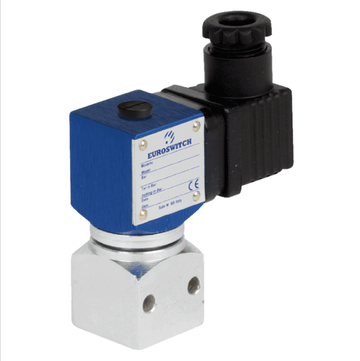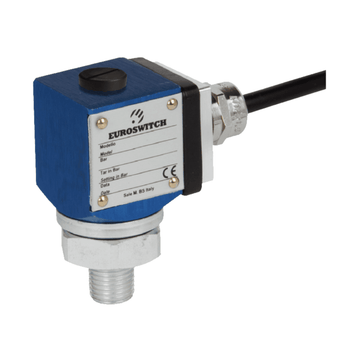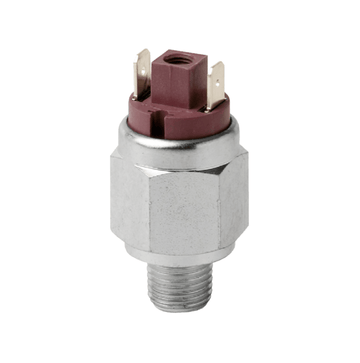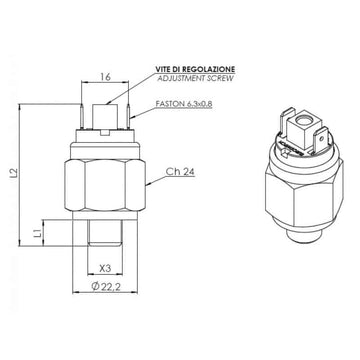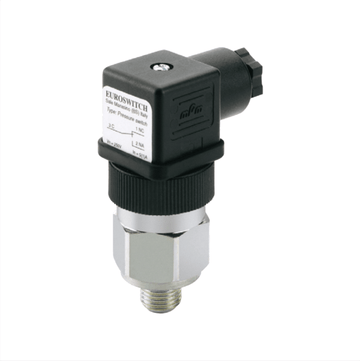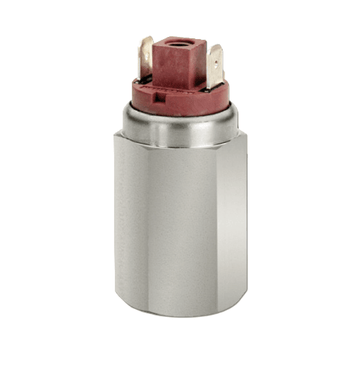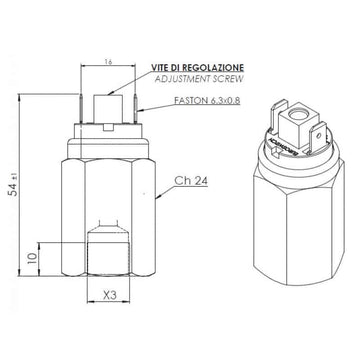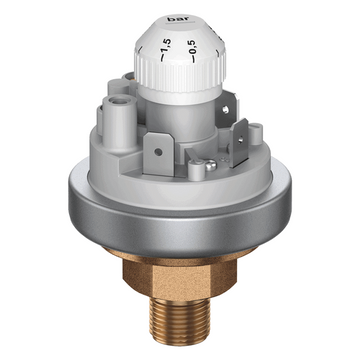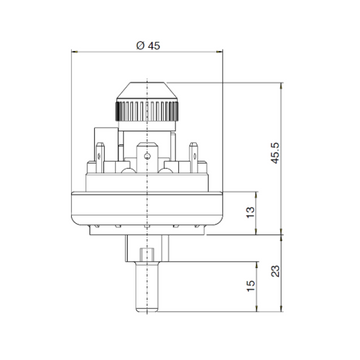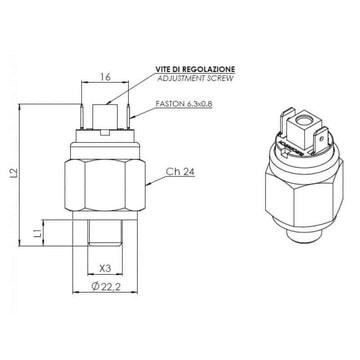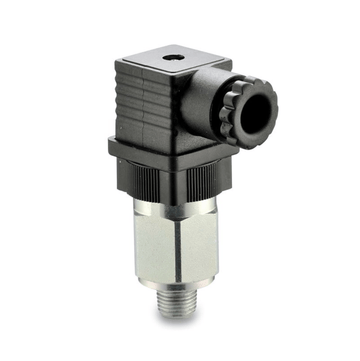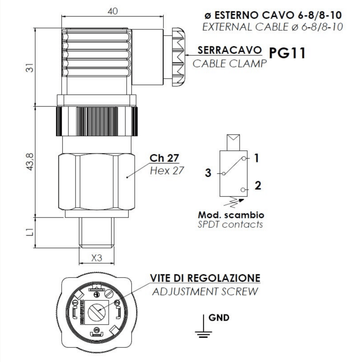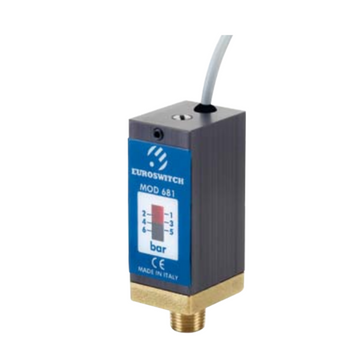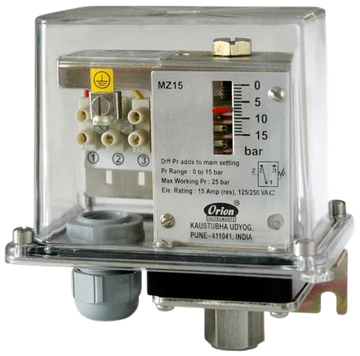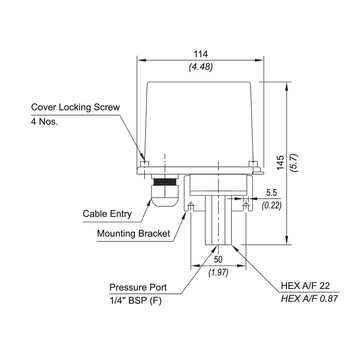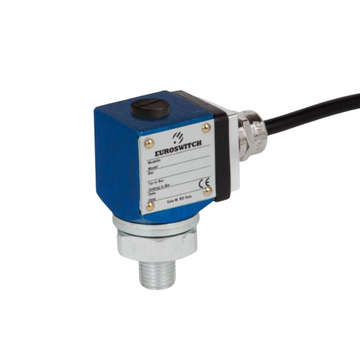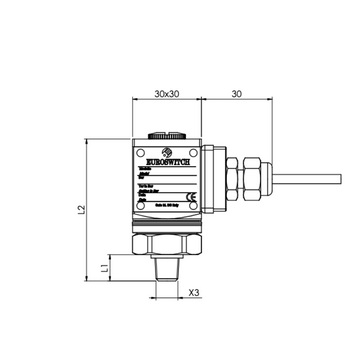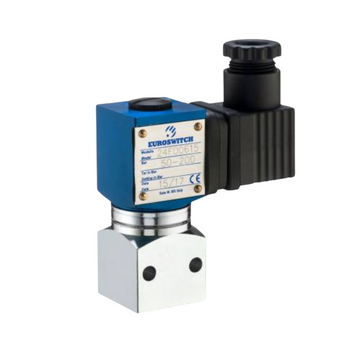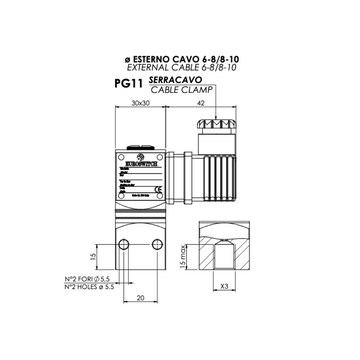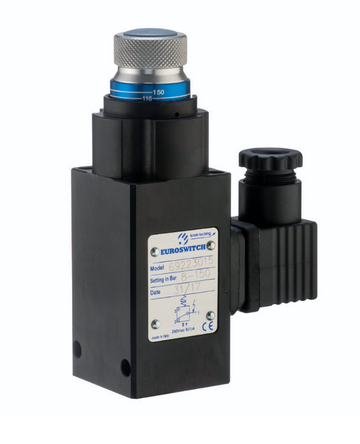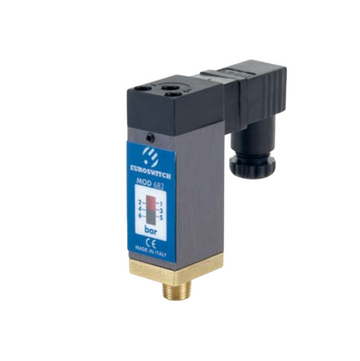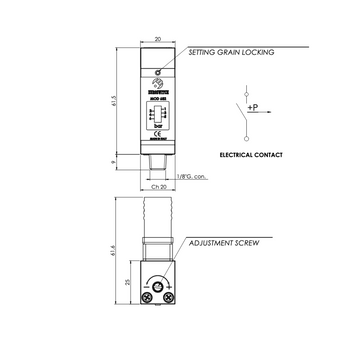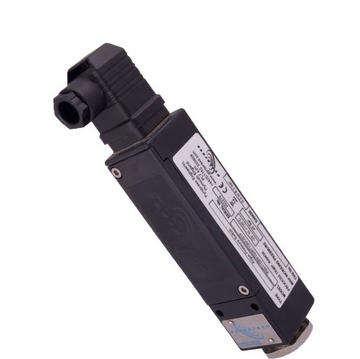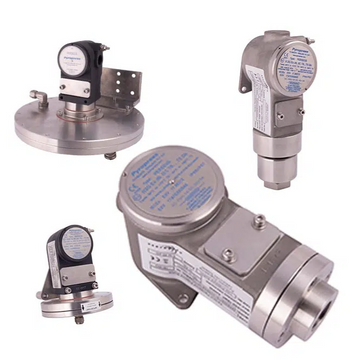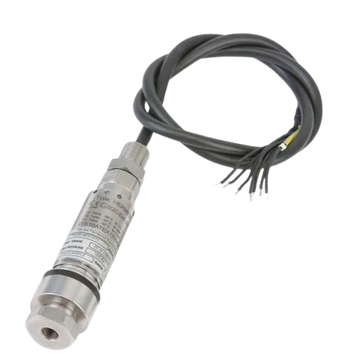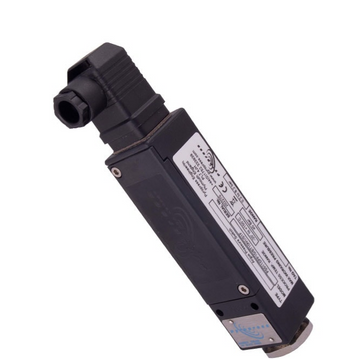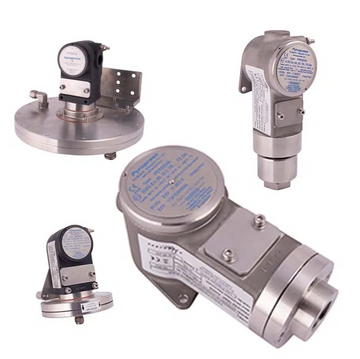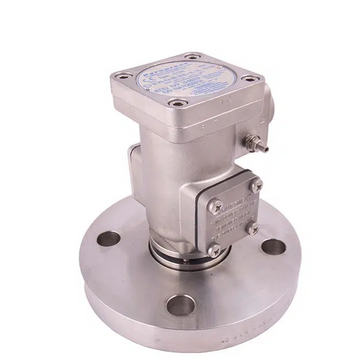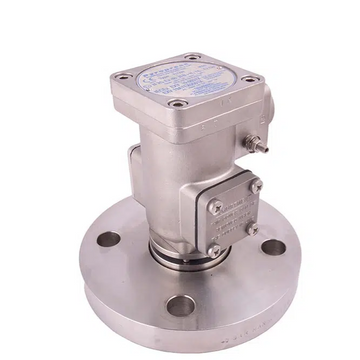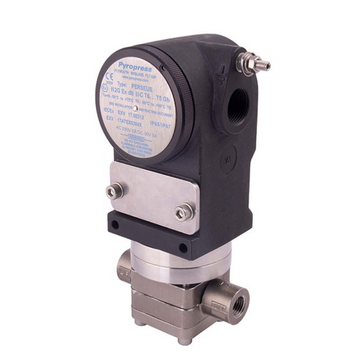Pressure Switches
A pressure switch is critical for regulating the activation and deactivation of pumps in fluid systems when pressure thresholds are reached. They are also used in process control systems to maintain consistent pneumatic or mechanical pressure.
Understanding how pressure switches work, the many types of pressure switches, and the typical applications for them can assist you in selecting the best solution for a specific application.
What is a Pressure Switch, Exactly?
A pressure switch is a simple electromechanical device operated by pressure to turn an electrical circuit on or off. The set point is the pressure threshold that activates the switch, while the cut out point is the pressure threshold that deactivates the switch.
A pressure switch is composed of the following parts:
- A diaphragm that also functions as a pressure sensor. It is often made of a pliable, pressure-sensitive substance.
- A spring with adjustability to vary the set or cut out points. Some switches have separate springs that control the set and cut out points.
- An AUTO/OFF lever. This lever is necessary for deactivating the switch during installation or maintenance. In other cases, a knob is used instead of a lever, but the concept is the same.
There are two kinds of pressure switches: normally open (NO) and normally closed (NC) (NC). The open/closed terminology refers to the switch's electrical contacts. When the pressure is within a safe range, the contacts in a NO switch stay open; when the pressure exceeds the safe limit, the connections close.
The application determines the pressure threshold that changes the state of the contacts in NC switches. It might be the set point for specific applications and the cut-off point for others.
What Purpose Does a Pressure Switch Serve?
A pressure switch is a passive device since it merely detects the presence or absence of pressure. The pressure of the diaphragm compresses a calibrated spring. When the spring tension approaches or exceeds a certain level, the contacts of a NO or NC switch are switched from open to closed.
For ease of setup across several applications, pressure switches generally comprise at least one pair of NO and one pair of NC contacts.
Applications for Common Pressure Switches
Pressure switches are commonly used in industrial process control systems. Here are a few such examples:
Systems that make use of compressed air. Pressure switches turn on or off the compressor at specific points.
HVAC units. Pressure switches are critical safety components in heating systems such as furnaces. They will turn off the furnace if they detect negative pressure caused by the draft-inducing motor. Pressure switches may detect leaks by measuring gas pressure.
Machines for processing. Pressure switches are used in fluid and gas flow control systems to maintain a consistent flow rate.
Pumping system. Pressure switches help to keep reservoir water levels stable by activating and deactivating the pump as required. The NO contacts shut when the water pressure falls below a particular threshold, enabling current to pass through the pump. When the water pressure surpasses the preset level, the contacts open, turning off power to the pump and, as a result, terminating the pumping activity.
PVL Pressure Switches
Pressure Vacuum Level Ltd has been selling high-quality pressure switches for over 28 years. PVL provides these devices for various industries.
Don't hesitate to contact us if you have any questions about our pressure switches or other products.
Other Products
PVL customers can rely on us for high-quality products. Pressure Switches are only a handful of the products we provide customers across the United Kingdom. We are also a significant supplier of Vacuum Switches and Transducers.
- Pressure Switch ≤ 250V
- SPDT C/O Contacts
- Up to 400 bar adjustment ranges
- Over-pressures up to 800 bar
- Max working pressures up to 450 bar
- 1/4” BSP male/female thread options
- Viton seal (others available)
- DIN43650 / cable options
 |
Model 24 Technical Datasheet |
 |
Model 24C Technical Datasheet |
 |
Model 24F Technical Datasheet |
- Piston Pressure Switch ≤ 48V
- N/O or N/C Contacts
- Up to 300 bar adjustment ranges
- Over-pressures up to 800 bar
- Max working pressures up to 450 bar
- 1/4” BSP thread (others available)
- NBR+Teflon piston seal
- Steel Body (Brass + Stainless) available
- Free adjustments
 |
Technical Datasheet |
- Piston Pressure Switch ≤ 250V
- SPDT C/O Contacts
- Up to 400 bar adjustment ranges
- Over-pressures up to 900 bar
- Max working pressures up to 450 bar
- 1/4” BSP thread (others available)
- NBR+Teflon piston seal
- Steel Body (Brass + Stainless) available
- Free adjustments
- ATEX option available
 |
Technical Datasheet |
- Diaphragm Pressure Switch ≤ 48V
- Female Thread N/O or N/C Contacts
- Up to 50 bar adjustment ranges
- Over-pressures up to 300 bar
- Max working pressures up to 150 bar
- 1/4” BSP female (others available)
- Viton seal (others available)
- Brass, steel or stainless steel body
 |
Technical Datasheet |
- Temperature range: Ambient temperature from –20°C to +85°C
- Diaphragm material: NBR, Silicone, FKM (Viton® ), EPDM.
 |
Technical Datasheet |
- Piston Pressure Switch ≤ 250V
- N/O or N/C Contacts
- Up to 300 bar adjustment ranges
- Over-pressures up to 800 bar
- Max working pressures up to 450 bar
- 1/4” BSP thread (others available)
- NBR+Teflon piston seal
- Steel Body (Brass + Stainless) available
- Free adjustments
 |
Technical Datasheet |
- Pressure Switch ≤ 250V
- SPDT C/O Contacts
- Up to 300 bar adjustment ranges
- Over-pressures up to 800 bar
- Max working pressures up to 450 bar
- 1/4” BSP thread (others available)
- Viton / NBR+Teflon Seal (Model 28N)
- Adjustable Hysterisis (10-50%)
 |
Model 27N Technical Datasheet |
 |
Model 28N Technical Datasheet |
- Pressure Switch with Visual Scale
- SPST N/O Contacts
- Up to 6 bar adjustment ranges
- Max over-pressure 20 bar
- Switch rating 48V
- Air only
- Electrical cable (Model. 681)
- DIN43650 (Model. 682)
 |
681 Technical Datasheet |
- Current Rating: 0.2-5 A
- Media Type: Liquid
- Contact System Type: SPDT
- Accuracy: +/- 1% FSR
- Min Range: 5 bar
- Max Range: 400 bar
 |
MZ Pressure Switch Technical Datasheet |
- Case Material: Anodised aluminium
- Electric Contacts: SPDT, silver
- Maximum Fluid Temperature: 100°C
- Hysteresis: Fixed, approximately 10% of the setting value
- Maximum Overpressure Limit: 900 bar Action Type: 1B
- Mechanical Working Life: 1,000,000 (10⁶) operations
- Fixing / Connection: Manifold connection – G 1/4” female
- Protection Degree: IP65
- Seal Material: NBR + Teflon (refer to page 17)
- Weight: Approximately 460 g
- Accessories Supplied: Gasket and fixing screw
 |
Technical Datasheet |
- Electrical Connection: Connector DIN43650-C (internal 9.4 mm)
- Type of Contact: Reed switch, SPST NO (normally open)
- Max Switch Voltage: 48V
- Max Switch Current: 0.5A
- Max Switching Capacity: 10W
- Max Fluid Temperature: 60°C
- Max Overpressure Limit: 20 bar
- Mechanical & Electrical Life: >1,000,000 cycles
- Protection Degree: IP40 (for dry, non-harsh environments)
- Tightening Torque: 15 – 20 Nm
- Weight: Approximately 105 grams
 |
Technical Datasheet |
- ATEX & IECEx CE Ex II1G Exia IIC
- T6 (-50 to +78°C), T5 (-50 to +93°C), T4 (-50 to +128°C)
- PPS polymer or 316 stainless steel housing, IP66/67
- 1 or 2 SPDT microswitches (simultaneous)
- Connection: DIN 43650, M20 terminal block, 4-pin M12, or flying lead (M20/½” NPT)
- SIL 2 compliant (IEC 61508)
 |
Technical Datasheet |
- 1x or 2x SPDT microswitches (DPDT or dual switching)
- Internal adjustment scale
- Housing: 316 SS or anodised aluminium
- IP66 / IP67 rated
- SIL 2 (IEC 61508) compliant
- Compact, robust, reliable, and accurate
- Flameproof Ex db certified (ATEX / IECEx / UKEx)
- Fast installation with flying lead (>300mm) & Ex db gland
- Ideal for wellhead and actuator applications
 |
Technical Datasheet |
- Housing: PPS engineering polymer or 316 stainless steel
- Protection: IP66 & IP67
- Switches: 1x or 2x SPDT (simultaneous operation)
 |
Technical Datasheet |
- 1x or 2x SPDT microswitches (DPDT, deadband, or dual switching)
- Internal adjustment scale for precision setup
- Housing: 316 stainless steel or anodised aluminium
- IP66 / IP67 rated for environmental protection
- Proven SIL 2 certified (IEC 61508)
- IP66-rated black anodised aluminium or 316 stainless steel housing
- 1x or 2x SPDT microswitches (simultaneous operation)
- M20 entry with integral terminal block
- SIL 2 certified (IEC 61508)
- MOD approved & nuclear industry compliant
- Optional circuit monitoring resistors
 |
Technical Datasheet |
- IP66-rated housing: anodised aluminium or 316 stainless steel
- 1x or 2x SPDT microswitches (simultaneous)
- M20 entry with integral terminal block
- SIL 2 (IEC 61508) certified
- MOD approved and nuclear compliant
- Optional monitoring resistors
 |
Technical Datasheet |
- 1x or 2x SPDT microswitches (simultaneous or adjustable)
- Optional adjustable deadband
- Internal adjustment scale
- 316 stainless steel or black anodised aluminium housing
- IP66 & IP67 rated
- SIL 2 certified (IEC 61508)
 |
Technical Datasheet |

